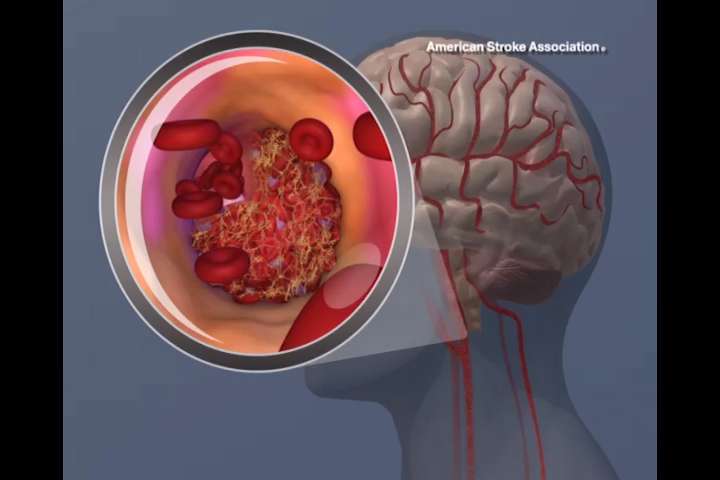Researchers discover single-cell immune composition of plaques from stroke patients

Atherosclerotic plaque, the fatty buildup in arteries that can lead to heart attack and stroke, contains an abundance of the immune cells known as T-cells, Mount Sinai researchers have shown for the first time.
T-cells are an essential part of the human immune system, helping to protect the body from infection and cancer, but they are suspected of aggravating atherosclerosis. The breakthrough findings, published in the October 7 issue of Nature Medicine, result from a deep single-cell analysis of immune cells in plaque, something that has never been done before in humans. This research can help doctors better understand how the immune system contributes to cardiovascular disease and complications. The study could also lead to development of drugs to target these cells to prevent cardiovascular events.
"This is a first study towards the ultimate goal of building a single-cell immune atlas of human atherosclerosis. By profiling individual cells in blood and atherosclerotic plaques, we found new inflammatory alterations in plaques related to cardiovascular events," said lead investigator Chiara Giannarelli, MD, Ph.D., Assistant Professor of Medicine (Cardiology), and Genetics and Genomic Sciences, at the Icahn School of Medicine at Mount Sinai. "We found that T-cells, a cell type known to fight infections and cancer, may have an unanticipated important role in driving atherosclerotic cardiovascular disease. Exploring the diversity of T-cells in human atherosclerosis may lead to new therapeutics in the future."
Researchers studied 46 patients undergoing carotid artery surgery at The Mount Sinai Hospital (both men and women, with an average age of 72). Forty percent of the patients had recently had a stroke. Investigators analyzed atherosclerotic plaque removed during the surgery and the patients' blood immune cells. The team used a combination of cutting-edge technologies (called CyTOF, single-cell RNA sequencing, and CITE-seq) to get an in-depth look at the individual protein and gene expression of single cells. They discovered that these patients had an abundance of T-cells along with an increased infiltration of a subset of pro-inflammatory T-cells called CD4+ in patients who had suffered a recent stroke.
Surprisingly, many other subsets of T-cells, including CD8+ T cells, were infiltrating plaques in different forms: some were highly active or inflammatory, others were differentiated and highly specialized to the plaque environment, and some subsets were exhausted, which means they were progressively losing their ability to kill disease cells. Additionally, the exhausted T-cells in these plaques expressed PD-1, a protein that normally prevents T cells from killing other cells including cancer cells.
Normally, CD8+ T cells operate by recognizing and killing cancer cells or cells infected by viruses. More research is needed to identify their specific function and cell targets in atherosclerotic plaques. Ultimately, all these cell subsets and different functions may contribute to increase plaque inflammation in stroke patients, possibly putting these patients at a higher risk of future cardiac events, the researchers said.
"These findings suggest that PD-1 inhibitors, a breakthrough treatment that is used in cancer to turn T-cells against the tumor, may also activate exhausted T-cells in plaque. This could increase plaque inflammation and possibly the risk for cardiovascular events in patients," said Dr. Giannarelli.
"This study is a perfect example of how single-cell mapping of human disease lesions can transform our understanding of disease pathophysiology," explained co-author Miriam Merad, MD, Ph.D., Director of the Precision Immunology Institute, and Director of the Human Immune Monitoring Center at the Icahn School of Medicine at Mount Sinai. "This study has generated a new hypothesis about disease drivers that we hope will lead to novel therapies."
"This study shows the molecular connections linking blood and cellular make-up of the atherosclerotic plaque within the same individual and the clinical outcome," said Michelle Olive, Ph.D., Program Officer at the National Heart, Lung, and Blood Institute Division of Cardiovascular Sciences. "This study shows that cutting edge techniques like CyTOF and other single cell technologies are useful in charting the landscape of atherosclerotic plaques."
More information: Dawn M. Fernandez et al. Single-cell immune landscape of human atherosclerotic plaques, Nature Medicine (2019). DOI: 10.1038/s41591-019-0590-4




















